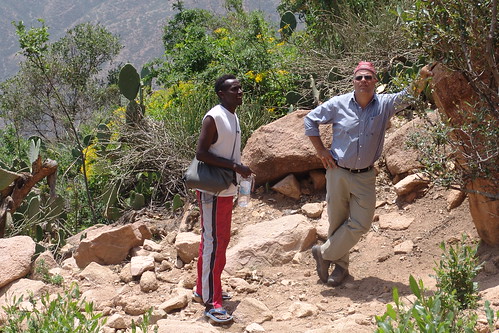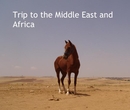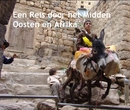Twenty minutes up a mountain

Well, today we finally made it out of Asmara. It was
to be a short trip down the valley to Nefasit and a
short visit to the monastery there, maybe back by
lunch or at least tea-time.
But first we needed to finalise our booking for the
bus to Assab, in the south which will be our
sprinboard into Djibouti, now that our English and
Dutch speaking friend down there has found someone who
is wiling to take us across the border (we have our
visas) and take us to "O" from where we can take a
boat across the bay to Djibouti City, away from the
dangers of pirates, which are found out at sea. From
Djibouti City it is just 20 miles to the Somaliland
border, not sure of this is open, but we will see.
Funnily enough we have not met ANYONE who has been to
Somaliland, during our whole trip. Funny that!
Anyway, having been told twice yesterday to come back
today to make a reservation on the bus, we were told,
quite happily by the two women who could have helped
us that it would not be possible to put our name down
for a bus next week, not even if we were not yoo
bothered about it leaving on Monday, Tuesday or
Wednesday. Eventually we found a man who gave us a
number we can ring on Friday, to get a seat for next
week. We will see.
So now, we just had to find a bus to Nefasit, which
was only 20 kilometers away. Well, cutting a long
story short, after Fred waited in a queue for a bus
whichj might or might not go to Nefasit (down what
must be one of the busiest roads in Eritrea), along
with women, chickes, babies and bundles of flour, we
decided to go with a taximan, who was willing to drive
us down and wait for us.
The trip down from the Asmara plateau to the coastal
plain was very picturesque, as it followed the route
of the Italian-built Asmara-Massawa railway, all
tunnels, bridges and twists. Nefasit turned out not to
be much of a town, but it has the distinction of being
very close to Debre Bizen, a very famous Eritrean
Orthodox monastery. It promised to have a library with
many very old, beautifully illuminated manuscripts
belonging to the Church, as well as having wonderful
views.
Our friend at the tourist office told us it was a 20
minute walk up from the twon to the monastery. Our
taxi driver doubted this and said we would take 2
hours to get up and down. From what I could see of the
very high mountain, even that looke d abit optimistic.
We were offered a guide, in a very take-it or leave-it
kind of way, after all the path went directly up to
the monastery. But more in order to avoid being
pestered by other chaps wanting to take us up, we
decided to take Rina's nephew Iskinder with us (Rina,
speaks Italian and runs the Rina Bar, a roadside cafe
with posters of Dutch tulips and David Beckham on the
walls, bottles of Eritrean grappa and sambuca on the
shelves behind the bar and a fridge full with
sparkling mineral water and cold beer).
Before we knew it we had attracted another guide, a
mini one called Natu (9 years old), and off they raced up the
mountainside, Fred and I lumbering behind. Fred has
not been too fit these past few days and I have been
having some nasty problems with teh dry skin on my
heels, making walking normally very painful....
Anyway, it was almost three hours later that we
finally made it up to Debre Bizen. We only managed it
through the skill of Iskinder (18 years old) motivating Fred to keep
going, when Fred felt quite keen to call it quits.
Amazing! He would make an excellent PE teacher.
The journey was very vertical, very spectacular, very
treacherous, with gravel and rocks slipping underneath
our tread. All right for the young ones who as good as ran up the hill vertically, taking all the shortcuts through the prickly and strong cacti and the thorny acacias. We were supposed to folow, but it was usually some distance behind when Natu wasn't giving us a helping hand (literally holding outr hands).
We passed beautiful flowers, butterflies, a
grasshopper, saw beautiful birds, including the
magnificent peregrine falcon, and heard and saw a few
families of baboons (a bit scarey they were too,
making all those aggressive noises).
The monastery reminded us very much of an Italian
hilltop village, old style, full of agricultural
buildings, donkeys, goats, cattle and camels. Not many
monks to be seen unfortunately. We were not shown
inside the church or the chapel or the library,
instead to an old shed, painted yellow and green, and
were served with sweet tea and enjera with very spicy
sauce. Not the most welcoming welcome, but it was what
we needed before the climb below. Didn't see many monks but heard them praying as we entered and then one racing throuhg some prayer at teh speed of a Peter 'Sullevan commentary oon a never-ending sicx furlong sprint at Goodwood!
We arrived back six hours after we had left, a long twenty minutes.
We are thinking that it is very difficult to arrange
anything here in Africa (and it is not only us but
also the journalist and PhD student we met up with for
dinner last night for a very enjoyable Italian meal),
but when yuu finally do, there is SUCH a sense of
achievement! And so it seems!
Tomorrow, we leave at 4.30 am fro Barentu, capital of
teh Barka-Gash province in the West and we should be
back here in Asmara on Saturday or Sunday, after
stopping off in Keren.
See you then!
__________________________________________________
Labels: Eritrea, Trip to Middle East and Africa




0 Comments:
Post a Comment
<< Home